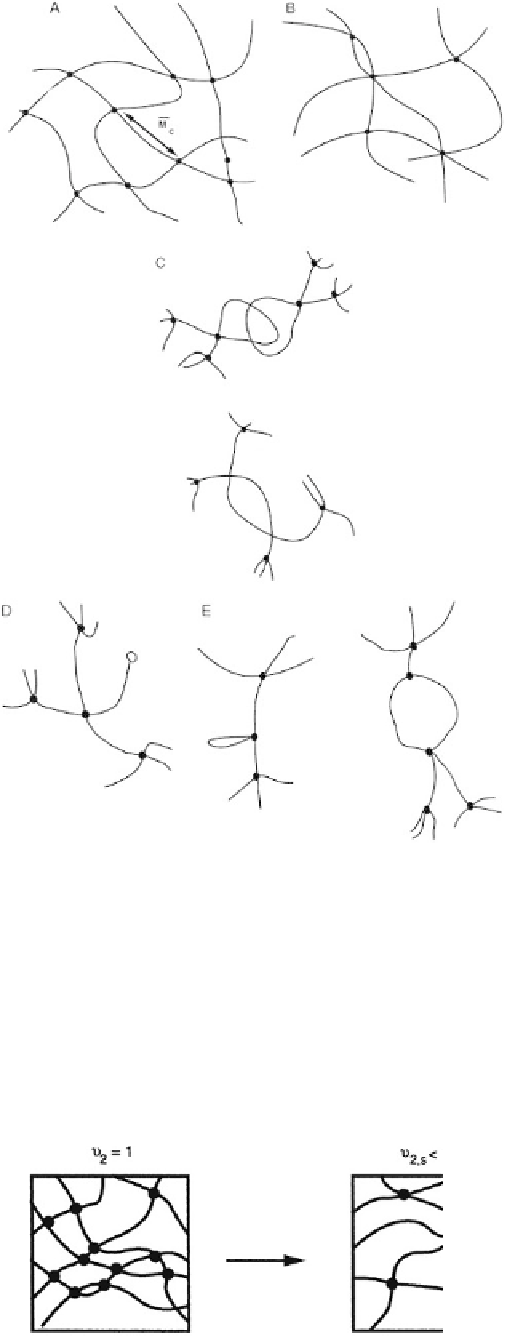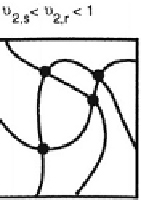Biomedical Engineering Reference
In-Depth Information
size and contribute to the deformational distribution
during biomedical applications.
Preparation
Hydrogels are prepared by swelling cross-linked struc-
tures in water or biological fluids. Water or aqueous so-
lutions may be present during the initial preparation of
the cross-linked structure. Methods of preparation of the
initial networks include chemical cross-linking, photo-
polymerization, or irradiative cross-linking (Peppas
et al.,
2000).
Chemical cross-linking calls for direct reaction of
a linear or branched polymer with at least one di-
functional, small molecular weight, cross-linking agent.
This agent usually links two longer molecular weight
chains through its di- or multifunctional groups. A second
method involves a copolymerisation-cross-linking re-
action between one or more abundant monomers and one
multifunctional monomer that is present in relatively
small quantities. A third method involves using a combi-
nation of monomer and linear polymeric chains that are
cross-linked by means of an interlinking agent, as in the
production of polyurethanes. Several of these techniques
can be performed in the presence of UV light leading to
rapid formation of a three-dimensional network. Ionizing
radiation cross-linking (
Chapiro, 1962
) utilizes electron
beams, gamma rays, or X-rays to excite a polymer and
produce
a
cross-linked
structure
via
free
radical
reactions.
Swelling behavior
Fig. 3.2.5-1 (A) Ideal macromolecular network of a hydrogel.
(B) Network with multifunctional junctions. (C) Physical
entanglements in a hydrogel. (D) Unreacted functionality
in a hydrogel. (E) Chain loops in a hydrogel.
The physical behavior of hydrogels is dependent on their
equilibrium and dynamic swelling behavior in water,
since upon preparation they must be brought in contact
with water to yield the final, swollen network structure.
Figure 3.2.5-2
shows one of two possible processes of
swelling. A dry, hydrophilic cross-linked network is
placed in water. Then, the macromolecular chains in-
teract with the solvent molecules owing to the relatively
should never be considered as points without volume,
which is the usual assumption made when developing
structural models for analysis of the cross-linked struc-
ture of hydrogels (
Flory, 1953
). Instead, they have a finite
A
B
Polymer swells
Polymer swells
Fig. 3.2.5-2 (A) Swelling of a network prepared by cross-linking in dry state. (B) Swelling of a network prepared by cross-linking in
solution.
















